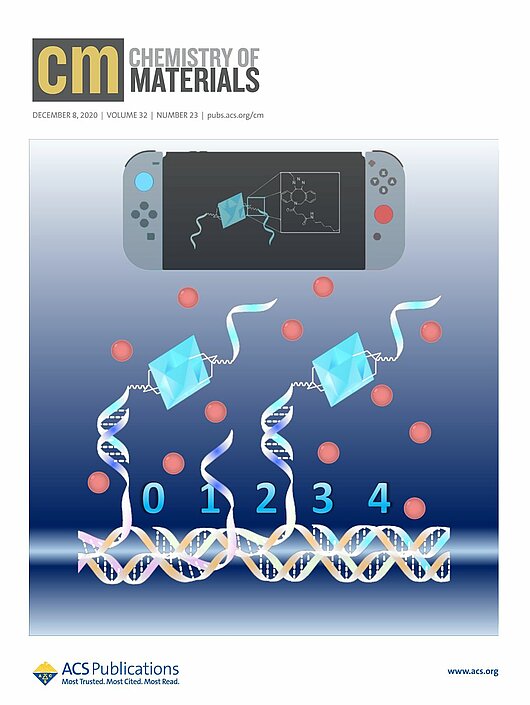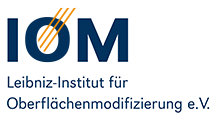Within a framework of interdisciplinary research that combines chemistry, physics, materials science, engineering, and biology, it is necessary to explore new materials and their properties, while considering their application perspectives in current and future manufacturing processes. An excellent area of application for this is 3D printing, as it has already established itself as a fast and cost-effective method to produce arbitrarily shaped structures, ranging from the finest mechanical components to entire houses. To push the boundaries of this versatile technology, the production of printing materials with new properties is crucial. We focus on expanding the use of materials for well-established processes such as stereolithography and filament printing by adding materials like graphene, carbon nanotubes, and their combination with molecular metal oxides.
By addition of biomolecules such as DNA or ion exchange processes, molecular metal oxides can be incorporated into 3D printing materials, providing them with properties such as biocompatibility and electrical conductivity. In addition to these topics, another focus is on the use of molecular metal oxides as photoinitiators for UV-curable polymers. The versatile configurability of these metal complexes is used to adapt to new tasks for the future use of 3D printing. For example, the production of a water-soluble and biocompatible photoinitiator allows the 3D printing of structures containing living cells.
These novel materials are analyzed in collaboration with partners within the IOM and external partnerships, such as with TU Chemnitz, using techniques such as conductivity measurements, infrared spectroscopy (ATR-IR), atomic force microscopy (AFM), cyclic voltammetry (CV), UV-Vis spectroscopy, and electron spin resonance (ESR) spectroscopy.
Highlights
Solution-Processed Formation of DNA-Origami-Supported Polyoxometalate Multi-Level Switches with Countercation-Controlled Conductance Tunability

E. Vogelsberg, M. Moors, A. S. Sorokina, D. A. Ryndyk, S. Schmitz, J. S. Freitag, A. V. Subbotina, T. Heine, B. Abel, K. Yu. Monakhov
Chem. Mater. 2023, 35, 14, 5447–5457
https://doi.org/10.1021/acs.chemmater.3c00776We report a chemically programmed design and the switching characteristics of a functional metal–DNA-origami–polyoxometalate (POM) material obtained from the solution-processed assembling of biocompatible molecular precursors. The DNA origami is immobilized on the gold surface via thiolate groups and acts as a carrier (ad-layer) structure, ensuring the spatially controlled hybridization of the pre-defined six-helix bundle (6HB) positions with DNA-augmented, tris(alkoxo)-ligated Lindqvist-type polyoxovanadate (POV6) units. The DNA-confined POV6 units accept electrons in a stepwise fashion, allowing for a multi-logic function, which we directly probe using scanning tunneling electron microscopy and spectroscopy. Electron acceptance and injection into the originally non-conducting DNA structure and the subsequent release to the gold substrate depend upon the potential at the nanoscale tip and the oxidation state of POV6, as well as on the mechanism of action of POV6 countercations. By combining experiment and theory, we show that the bio-hybrid heterojunction has far-reaching potential to create a chemically controlled POM-based nano-environment with synaptic behavior.
Solution-Processed Formation of DNA-Origami-Supported Polyoxometalate Multi-Level Switches with Countercation-Controlled Conductance Tunability

E. Vogelsberg, M. Moors, A. S. Sorokina, D. A. Ryndyk, S. Schmitz, J. S. Freitag, A. V. Subbotina, T. Heine, B. Abel, K. Yu. Monakhov
Chem. Mater. 2023, 35, 14, 5447–5457
https://doi.org/10.1021/acs.chemmater.3c00776We report a chemically programmed design and the switching characteristics of a functional metal–DNA-origami–polyoxometalate (POM) material obtained from the solution-processed assembling of biocompatible molecular precursors. The DNA origami is immobilized on the gold surface via thiolate groups and acts as a carrier (ad-layer) structure, ensuring the spatially controlled hybridization of the pre-defined six-helix bundle (6HB) positions with DNA-augmented, tris(alkoxo)-ligated Lindqvist-type polyoxovanadate (POV6) units. The DNA-confined POV6 units accept electrons in a stepwise fashion, allowing for a multi-logic function, which we directly probe using scanning tunneling electron microscopy and spectroscopy. Electron acceptance and injection into the originally non-conducting DNA structure and the subsequent release to the gold substrate depend upon the potential at the nanoscale tip and the oxidation state of POV6, as well as on the mechanism of action of POV6 countercations. By combining experiment and theory, we show that the bio-hybrid heterojunction has far-reaching potential to create a chemically controlled POM-based nano-environment with synaptic behavior.


